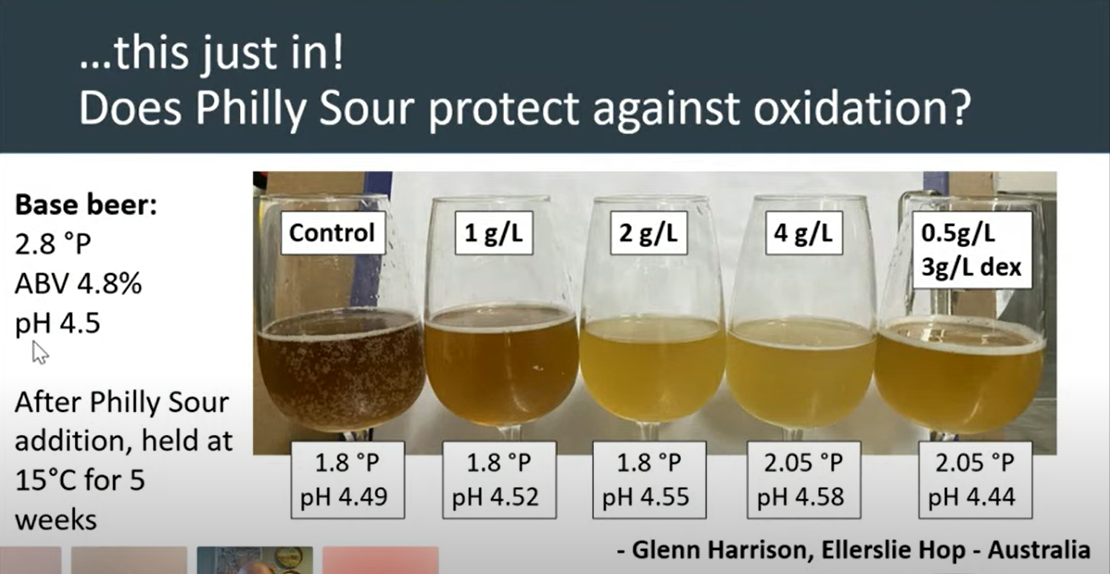hungupdown
Well-Known Member
The Philly Sour presentation, mentioned an interesting experiment. In it they found adding Philly Sour yeast, at bottling, could reduce oxidation over time.
The pictured results looked very good.
 So I'm wondering if anyone's tried this idea, or seen any more details.
So I'm wondering if anyone's tried this idea, or seen any more details.
They didn't include all details of the experiment, like how much oxygen had been left in the test bottles.
In the video presentation, the piece starts around 23:30 in. But the details are in
Philly Sour Overview - Reduced Oxidation
The test beer used was pH 4.5, so must have used some other yeast.
Over the 5 week test, the samples pH and gravity, hardly changed.
The PS added at bottling, isn't likely to ferment. As it would likely be outcompeted, by residuals of the primary fermentation yeast.
So what's going on, and could P S be used to increase shelf life?
The high levels of suspended yeast, in wheat beers, can scavenge any free oxygen. Maybe the added P S, can also do this.
Or maybe any highly flocculent yeast addition, pitched at 2g/L, would be just as good.
The pictured results looked very good.

They didn't include all details of the experiment, like how much oxygen had been left in the test bottles.
In the video presentation, the piece starts around 23:30 in. But the details are in
Philly Sour Overview - Reduced Oxidation
The test beer used was pH 4.5, so must have used some other yeast.
Over the 5 week test, the samples pH and gravity, hardly changed.
The PS added at bottling, isn't likely to ferment. As it would likely be outcompeted, by residuals of the primary fermentation yeast.
So what's going on, and could P S be used to increase shelf life?
The high levels of suspended yeast, in wheat beers, can scavenge any free oxygen. Maybe the added P S, can also do this.
Or maybe any highly flocculent yeast addition, pitched at 2g/L, would be just as good.


